Tom Parker Bowles on the perfect bacon sandwich
Sizzling, crispy and irresistibly pork-scented bacon all starts with a well-reared traditional breed of pig and a slow, careful curing process, says Tom Parker Bowles.
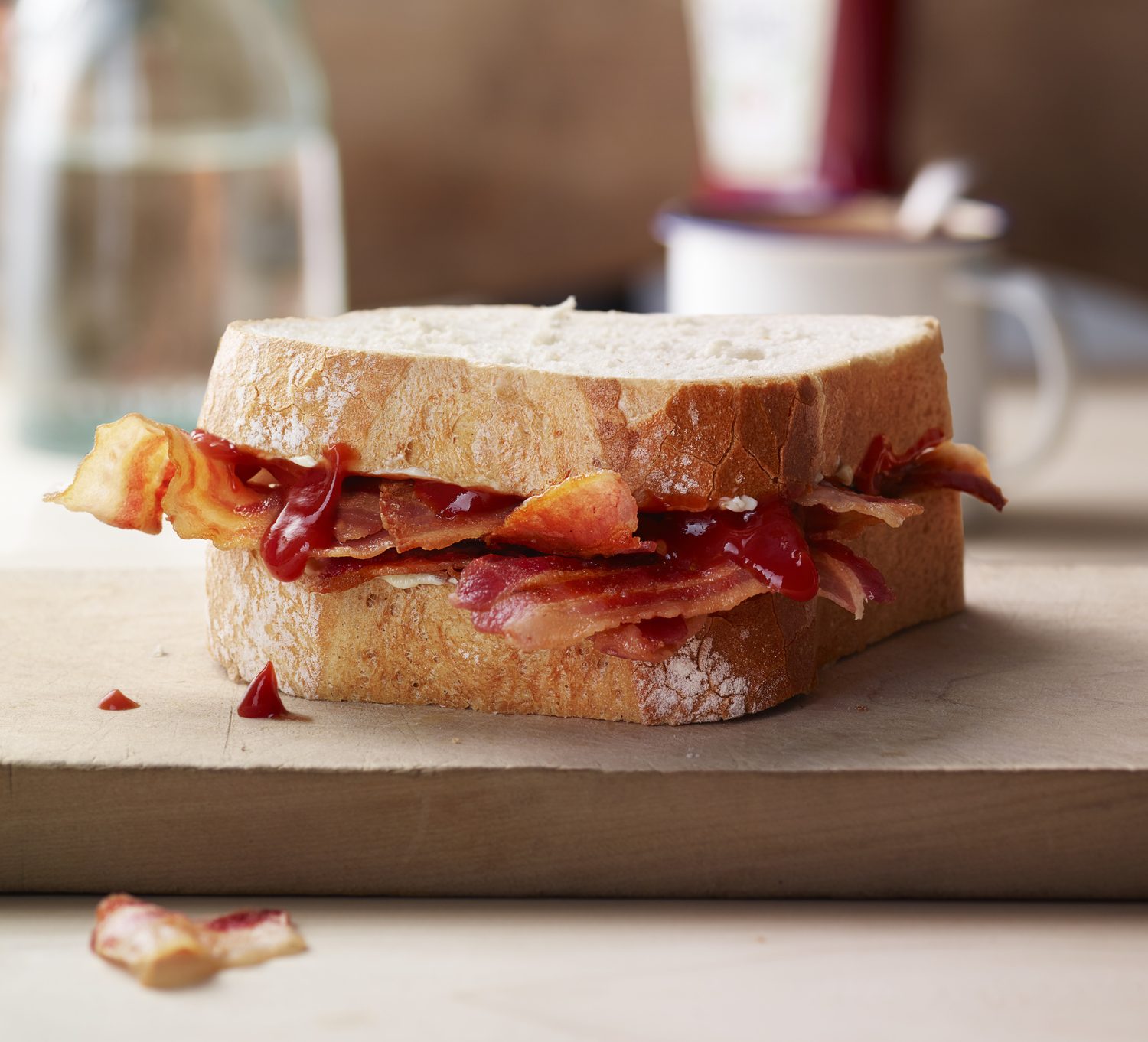

Ah, bacon. Breakfast behemoth, saviour of the sandwich and the frying pan’s erstwhile friend. Who can resist that pork-scented siren call, an olfactory allurement so seductive that it turns taste buds tumescent and vegetarian virtue the way of all flesh? When a man is tired of bacon, as Samuel Johnson almost said, he is also tired of life.
Gloriously democratic, bacon cares little for class, cash or snobbery, devoured on Formica-topped tables and solid silver platters alike. It pays no heed to the bourgeois strictures of formal eating, either. A pre-dawn snack and a feast before bed, crowning a burger, buried in burrito, slow-cooked with cabbage, sprinkled into salad or even slipped into fudge. ‘Landlord, bring us beans and bacon and a bottle of your finest Burgundy,’ cries some jolly character in the pages of G. K. Chesterton. Good bacon will never let you down.
And that’s the point. Just as with sausages, their blessed brethren, quality is all. At its best, all crisp-edged fat, sweet succour and gentle smoke, it’s one of the pinnacles of the meat curer’s art. At its worst, made with wretched, intensively farmed pigs, injected with brine and slathered with chemical ‘smoke’, it’s a scum-coated travesty of bitter despair.
Making the perfect bacon sandwich
The perfect bacon sandwich is an object of abject veneration, as simple as it is sublime. This is not the time for your fancy sourdoughs, arriviste baguettes or anything resembling toasted bread. The horror! A soft white bap is also acceptable — a brioche bun is not.
No, this is all about crisp, smoked streaky bacon (okay, smoked back bacon if you must), five slices, laid side by side on a slice of heavily buttered, cheap white bread. Yes, you heard me, Hovis, Mother’s Pride or something similar, soft and squidgy.
Slather lavishly with tomato ketchup (I suppose brown sauce will also do. Although ketchup is better. Obviously), then press down a second slice on top. The contrast between soft bread and crisp bacon, sweet butter and sharp sauce, is one of the most glorious on earth.
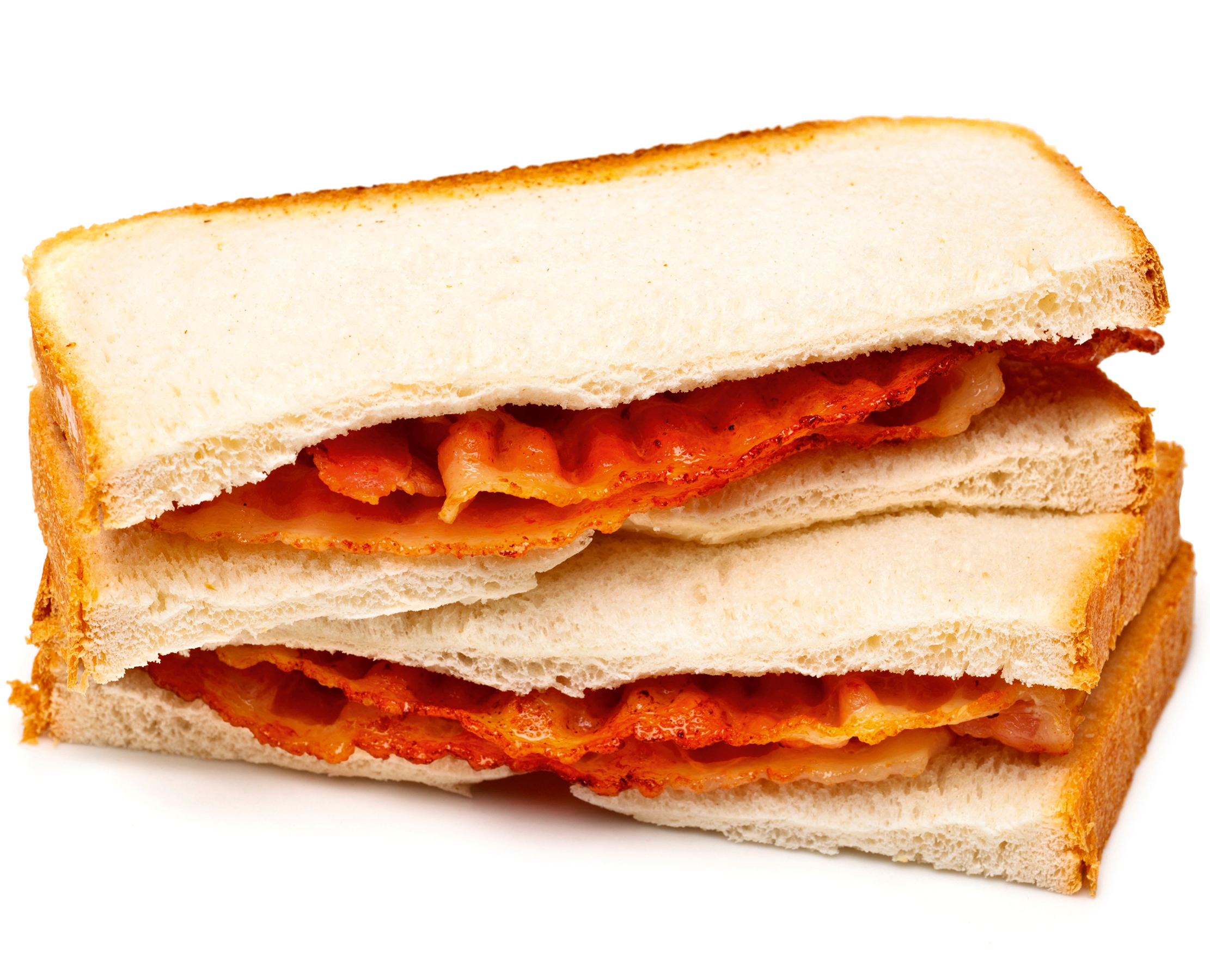
Good bacon always starts with a happy pig, as Peter Hannan — the man behind The Meat Merchant, whose Northern Irish bacon and sugar-pit-cured bacon ribs are rightly lauded — knows all too well. ‘Great pork should make great bacon, but this is not a hard and fast rule,’ he tells me. ‘The Irish pig was bred to be cured. However, this pig does not provide the most wondrous fresh pork. It tends to be leaner and not so marbled.’ He says breeds such as Oxford Sandy and Black and Mangalitsa are ‘a happy medium’ that provide beautiful pork and are still suitable for curing.
Sign up for the Country Life Newsletter
Exquisite houses, the beauty of Nature, and how to get the most from your life, straight to your inbox.
Bacon fanatic Niamh Shields, author of Bacon the Cookbook, recommends a breed taste test. ‘When you start to cure your own bacon, you can explore different breeds and try completely different bacon as a result,’ she explains. ‘I love Tamworth pork, as it has incredible flavour and lots of fat, which is where the flavour is. As with all food, a good end product comes from care taken along the way.’
"A couple of flitches of bacon did more for domestic bliss than 50,000 Methodist sermons and religious tracts"
During the 19th century, most families would have their own pig, fattened up on scraps, waste and foraged food. Breeds such as Yorkshire Large Whites, Middle Whites, Tamworths and Lincolnshire Curly Coated were popular: slow growing, with just the right amount of fat. Killed in the winter, each family would have their own secret recipes for curing and smoking to preserve the meat for the cold months ahead. And bacon didn’t only mean back and streaky (cut from the belly), but rather up to 18 different cuts, from butt to collar, with everything in between. As Miss Shields points out: ‘It is peculiar in that it’s at once the most over-estimated and underestimated meat to cook with. Bacon is so much more than a crisped slice or something shoved in a sandwich.’
Back then, bacon would be quite hard and rather salty, needing a long soak to remove excess salt. Yet it has long been the hero of the poor, scraps of the stuff adding much needed excitement to the consistently dreary diet of pottage, a thick grain and legume gruel. As William Cobbett noted in Cottage Economy: ‘A couple of flitches (or sides) of bacon did more for domestic bliss than 50,000 Methodist sermons and religious tracts. The sight of them upon the rack tends more to keep a man from stealing than whole volumes of penal statutes.’
Dry curing was the traditional British method, where the pork was covered in salt for a few days; it was then washed off and the meat left to mature for up to two weeks. Termed ‘green bacon’, it could be eaten or smoked over a fire (many chimneys had specially designed spaces that resembled priest holes) to add flavour and keep the flies away. The type of wood used depended on what was most abundantly available. Along the coast, they’d even use dry seaweed.
However, as the Industrial Revolution drove hordes from the country to the city, so the commercialisation of bacon curing began. The Danes, still dominant in the commercial-bacon market, were responsible for the introduction of the Landrace pig — lean, fast growing and particularly suited to mass production — in the mid 19th century. Costs may have been cut and the process made more rapid, but quality suffered, as did the welfare of the pigs.
‘Great bacon is dry cured, rather than injected with brine, to displace moisture and concentrate flavour,’ notes Mr Hannan. ‘Typically, the dry-curing process will remove 8%–18% moisture over the curing period of 10–21 days.’ Which means less weight and, therefore, less end product and profit. The Wiltshire cure, which is still used by some, involves immersing the pork in a brine bath for a few days, before it’s taken out and matured for a further two weeks, which produces a more subtle end product.
"Two rashers with the Sunday breakfast or a good bacon sarnie are no danger to any man"
These traditional methods not only take more time, but cost more to produce. ‘It’s unlikely that anyone dry curing would use intensively reared pork as their raw material, but those injecting brine would be less concerned,’ observes Mr Hannan. Brine injection actually adds weight, up to 10%, and can be ready in as little as three days. Little wonder it is such an attractive option — but at least this corner-cutting is relatively easily spotted. ‘Dry-cured bacon will always look and feel dry, whereas cheaper bacon always looks wet, whether in the pack or loose,’ adds Mr Hannan.
The use of nitrates — to inhibit bacterial growth, as well as to add flavour and make bacon pink — has become increasingly controversial, especially due to its suspected links to colorectal cancer. ‘I think we would all agree that we wouldn’t wish to eat these chemicals off a spoon,’ admits Mr Hannan. ‘But minimal quantities (2%–3%) are used in the dry-curing process. Two rashers with the Sunday breakfast or a good bacon sarnie are no danger to any man. If you’re eating a couple of kilograms a week, that would be a different matter.’ Still, there are nitrate-free varieties now available, although they certainly lack a certain bacon something.
Can you spot good bacon, blind, in the pan? It'll sizzle in the pan and water won't come out of it. ‘Water-logged bacon is not good news — it shrinks when it hits the pan,’ explains Miss Shields. ‘Pigs raised naturally in their own time with space and good food make the best bacon. Source your bacon well and you will be happy.’
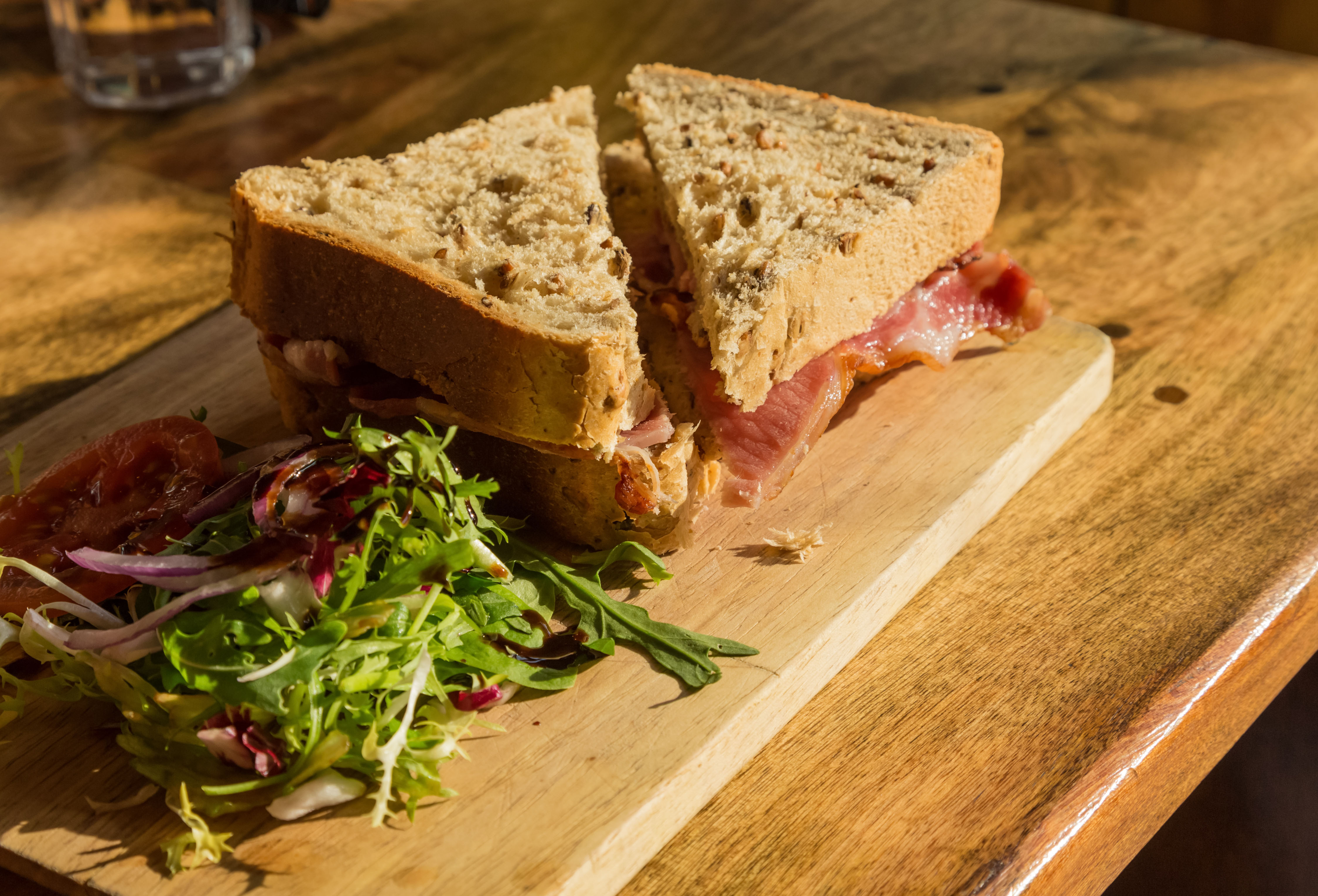
The ultimate Boxing Day bacon sandwich – with a surprise ingredient
SImon Hopkinson shares his recipe for a bacon sandwich with a perfect Christmassy twist.
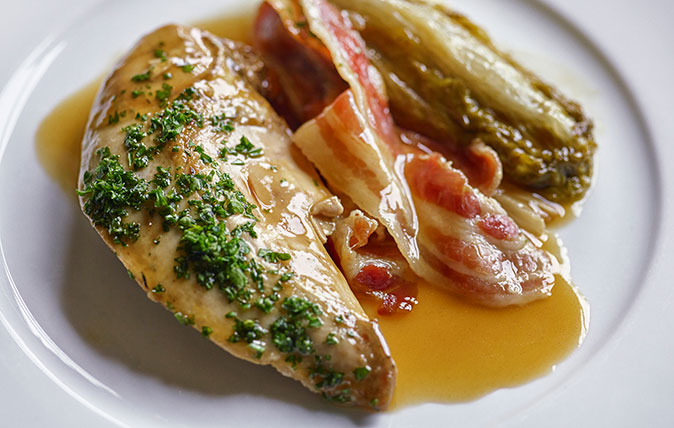
Credit: Jason Lowe
How to make roast pheasant with bacon and braised lettuce

Credit: Melanie Johnson for Country Life
How to make scallops with sweetcorn cream and bacon
Ideal for a fancy lunch or a special supper, this dish makes the most of some lovely ingredients you might
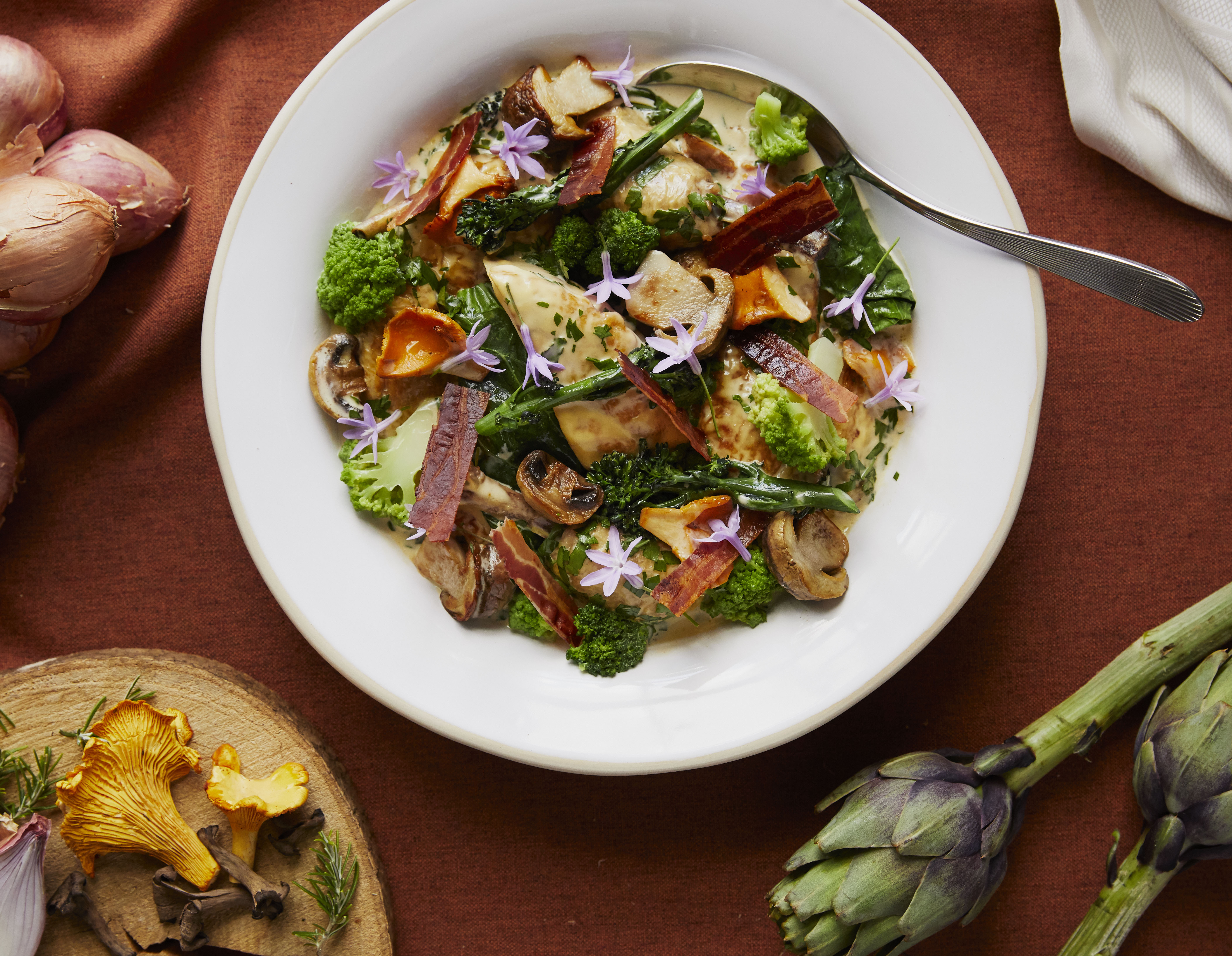
Credit: Coworth Park
Recipe: Cotswold white chicken with brassicas and smoked bacon
Rosemary, thyme and garlic are among the flavourings which give this delicious chicken dish it's flavour.
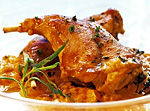
Greatest recipes ever: Rabbit with mustard and bacon
Charles Campion chooses rabbit with mustard and bacon as one of his greatest recipes ever

Greatest recipes ever: Nigel Slater’s remoulade of celeriac and bacon
Thomasina Miers picks Nigel Slater’s remoulade of celeriac and bacon as one of her greatest recipes ever
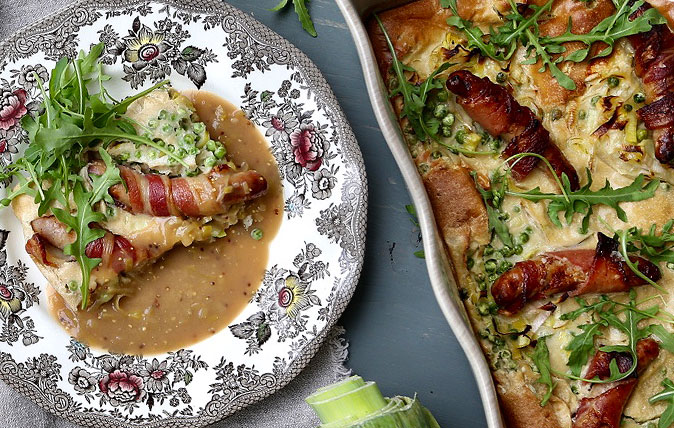
Credit: Melanie Johnson
How to make Toad in the hole, the ultimate British comfort food
Try Melanie Johnson's recipe for toad in the hole – the ultimate British comfort food – with a twist thanks to
Tom Parker Bowles is food writer, critic and regular contributor to Country Life.
-
 Ford Focus ST: So long, and thanks for all the fun
Ford Focus ST: So long, and thanks for all the funFrom November, the Ford Focus will be no more. We say goodbye to the ultimate boy racer.
By Matthew MacConnell
-
 ‘If Portmeirion began life as an oddity, it has evolved into something of a phenomenon’: Celebrating a century of Britain’s most eccentric village
‘If Portmeirion began life as an oddity, it has evolved into something of a phenomenon’: Celebrating a century of Britain’s most eccentric villageA romantic experiment surrounded by the natural majesty of North Wales, Portmeirion began life as an oddity, but has evolved into an architectural phenomenon kept alive by dedication.
By Ben Lerwill